Hope Island and Sanctuary Cove: Inside exclusive suburbs
The sprawling golf courses, resorts and high-end houses of Hope Island have cemented the northern Gold Coast area as an affluent area. But something went disastrously wrong and it cost investors millions.
Gold Coast
Don't miss out on the headlines from Gold Coast. Followed categories will be added to My News.
- HISTORIC FAMILY’S EPIC PALM BEACH TOWER REVEALED
- REVEALED: CAFE DBAR DEVELOPER SNAPS UP HOME OF COAST EATERY
THE sprawling golf courses, resorts and high-end houses of Hope Island have cemented the northern Gold Coast area as an affluent area.
Towers are rising and units are selling for more than $1m.
While plans to develop the area began nearly 40 years ago, it hit the big time in early 1988 when Sanctuary Cove opened.

FAIL: BIGGEST PROBLEM WITH GOLD COAST’S CANAL ESTATES
As the area’s first major resort and housing estate, Sanctuary Cove was the focus of significant hype, encouraged by its founder, colourful businessman Mike Gore.
Gore used his connections to stage The Ultimate Event, a gathering of celebrities including Frank Sinatra, Peter Allen and some of sports biggest names.
“All the legends are dead but Frank Sinatra is alive and he is still a legend,” Gore told the Bulletin at the time
“Let’s face it, this country is never going to see Frank Sinatra again.”
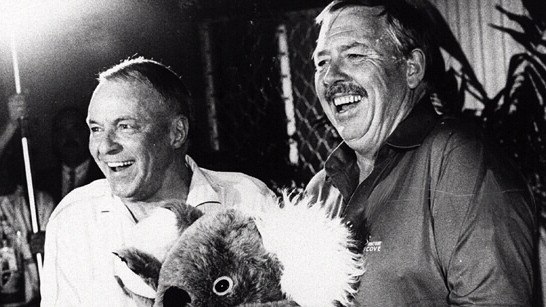
Sinatra, who indeed was playing his final Australian gig, was the main event. Other headliners included Whitney Houston, Ian Baker-Finch, Martina Navratilova, Russ Hinze and Eddie Kornhauser.
The success of Sanctuary Cove sparked a wave of new development and projects in the area as the 1990s began.
Japanese developers were heavy investors, throwing money behind several large-scale projects. Among the first announced was Shinko Australia’s $500m Hope Island resort, which was initially dubbed “son of sanctuary”.
“This is an evolutionary advance on Sanctuary Cove,’’ project co-ordinator, Gold Coast businessman Geoff Burchill told media in 1988.

“The project is similar to Sanctuary Cove, but will have a different atmosphere.
“I would say this resort will be a lot more tranquil.”
A site neighbouring the Hope Island Resort owned by developers Citylink Properties and Prodap Services was discussed as being the home of Australia’s first “fantasy resorts”, but it failed to become a reality.
In late 1989 Gold Coast-based developer Rhema Ventures bought a 288ha site it hoped to turn into a “ billion-dollar mini-city incorporating schools, churches, hotels and a wide range of accommodation”.
It too failed to get off the ground.

The boom of the Japanese market at the dawn of the 1990s led to expectations the Gold Coast would have 30 new golf courses by the middle of that decade, and at least 37 new international hotels by the year 2000.
In 1991 the Albert Shire had so many courses proposed, it was dubbed the “golf course capital of the southern hemisphere”.
But the economy went bad as a result of the early-’90s recession cooling the development market.
Still, Hope Island Resort’s golf course and tennis facilities were considered world-class and continued to attract major players and notable figures, including Queen Elizabeth II’s former son-in-law, Captain Mark Phillips.
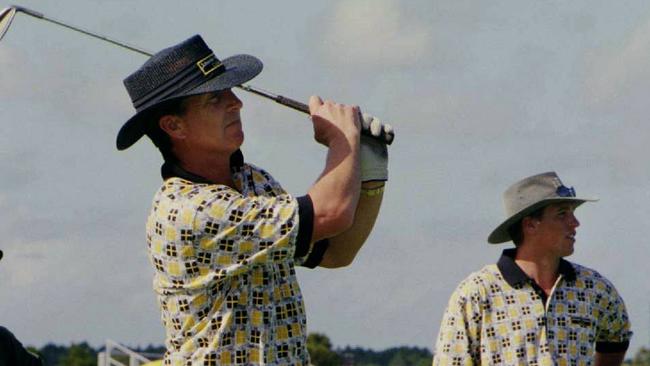
In 1996, Cairns-based developer Wayne Price unveiled plans for his $18m Village Square project, an arts and crafts “theme park” and entertainment development.
Built in 1998, it was put on the market in a fire sale.
In mid-2001, the company that bought up more than 100 of its shops went into receivership and they were again sold off.

The square sat largely empty for nearly two decades before it was demolished in 2017 to make way for a high-end retirement village.
The tough economic times continued to bite, with other developments failing.
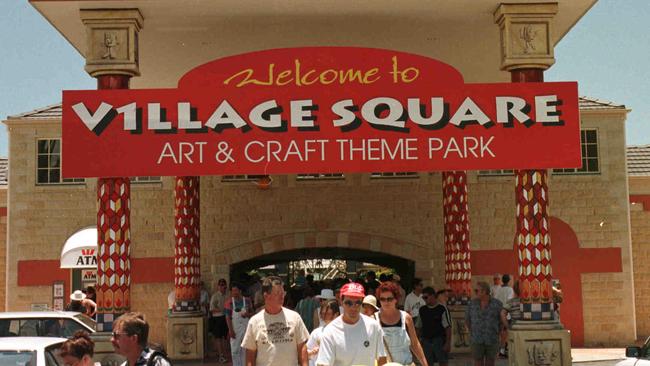
In 2000, Singaporean businessman Hanson Ler found himself to be the sold resident of the Ponofino Resort, a water-themed project that stalled when its developer, Emanouel Group, collapsed.
Fairfax’s The Age summed up the area’s state: “The fate of the resort typifies a succession of failed dreams on Hope Island since a controversial developer, the late Mike Gore, put this backwater on the map by building the Sanctuary Cove resort on a mangrove swamp.”
Hope Island continued to struggle through the 2000s and the Global Financial Crisis before finding a new lease of life in the 2010s.

INSIDE STORY: WHAT WENT WRONG WITH ELITE COURAN COVE
A range of new developments began to rise as investors sunk millions into property again.
This has been reflected in a dramatic rise in property prices.
New data released in February revealed homes in Hope Island now cost seven times what they did in 1996, the same year the Village Square project was unveiled.
The median price has soared from $145,000 to $1.04m.
With cranes again standing over Hope Island, the area will continue its 2010s facelift.
INSIDE STORY OF EXCLUSIVE RICH-LISTERS’ HOMES
MILLIONAIRES and rich-listers today call Hope Island home.
Among the Gold Coast’s most high-profile areas, it is best-known for its well-manicured golf courses and exclusive enclaves including Sanctuary Cove.
It’s a well-heeled suburb which will cost you a pretty penny to buy into these days, with new data released in February revealing its homes now cost seven times what they did in 1996.
The median price has soared from $145,000 to $1,040m
It’s a dramatic turnaround for an area which has a long history dating back to the 19th century.
In part one of a series on the booming north, we look at the suburb’s origin and how the 1980s shaped its future.
Hope Island is named for Captain Louis Hope, a Scottish-born grazier who arrived in Australia in 1848 and bought up significant land in and around Moreton Bay in the 1850s before serving as a state MP for more than 20 years.
REAL REASON WHY COAST SHOPPING CENTRE IS EXPANDING
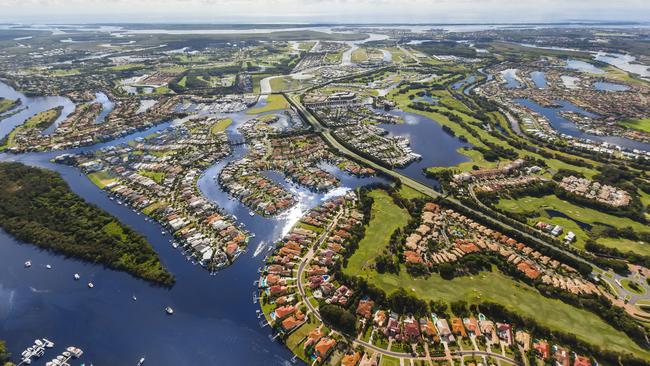
In thanks for his significant role in developing the region’s sugar carn industry, Captain Hope was given more than 1800 acres of land around the mount of the Coomera River.
The aristocratic figure never lived there, instead choosing to remain at his home in what is today Redland Bay before returning to the UK and ultimately dying in 1894.
The Coomera land was developed by the Grimes family into a sugar plantation, a thriving business which continued well into the 20th century.
Fast-forward to the 1980s and Hope Island came into focus as the next region for growth.
In 1985 the region was described by Bulletin writer Nan Dwyer described it as: “Sleepy and secure, its central and rather sodden terrain decorated only by the occasional farm house, while a few streets back from the Coomera River older weekenders rub shoulders with the houses of more recent commuter residents, Hope Island is about to be catapulted into its new tourist role as Gateway to the Gold Coast.”
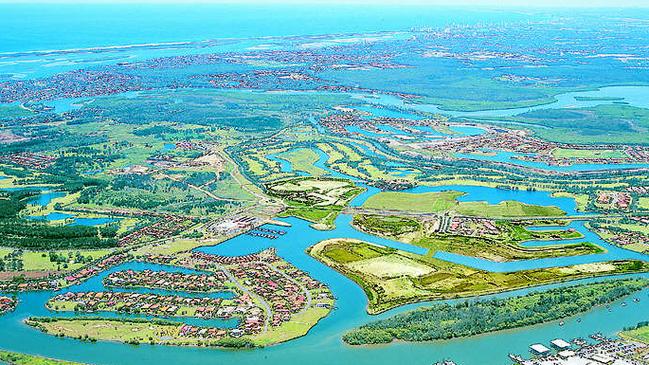
Plans were filed in 1982 by Development Equity Corporation for a giant 206ha, $150 million Mediterranean themed resort with a convention hall capable of seating 2000 people, a nine-hole golf course, parking for 2000 cars, eight tennis courts, two bowling greens, three swimming pools, and facilities for horse riding, squash and gymnastics.
Accommodation was to be provided by an international-standard hotel of 300 rooms, a “”village’’ hotel complex of 500 self-contained units in two and three-storey buildings and condominiums.
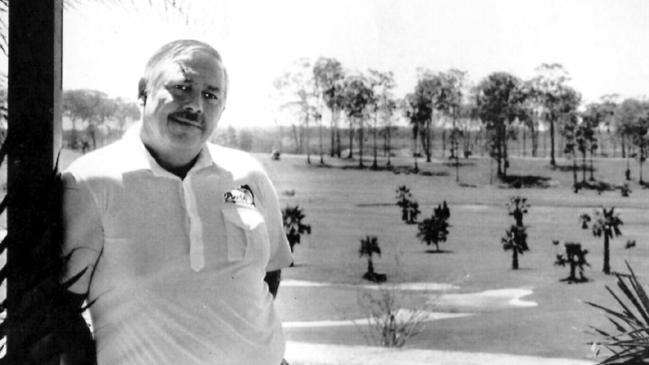
But the Albert Shire Council deferred approving the development at the time, saying it was “premature”.
It never went ahead.
In January 1984 an investment company paid $1.2 million for more than 174ha of land which plans for a tourist development.
Just one month later, businessman Mike Gore, heading developer Cheoy Lee Australia, submitted plans to Albert Shire Council for a giant $90 million recreational centre, marina, boat manufacturing industry and residential area.
“We have the grounds and the infrastructure to support an international stadium,’’ he said.
“The Gold Coast is Australia’s premier tourist destination and it’s in the embryonic stage of reaching the same standards at an international level.’’
This project, initially known as The Hope Island Resort, would eventually be named Sanctuary Cove and immediately became a topic of national conversation.

The Hawke Government waved the project through, saying it would not breach any foreign investment laws, while Premier Sir Joh Bjelke-Petersen immediately met with Mr Gore and approved the development less than a month after its unveiling.
“If you want to generate this sort of thing, you have to show an interest in it,’’ he said at the time.
The state government passed the Sanctuary Cove Resort Act 1985 which allowed for the site to be heavily developed into what was described at the time as an “integrated resort”.
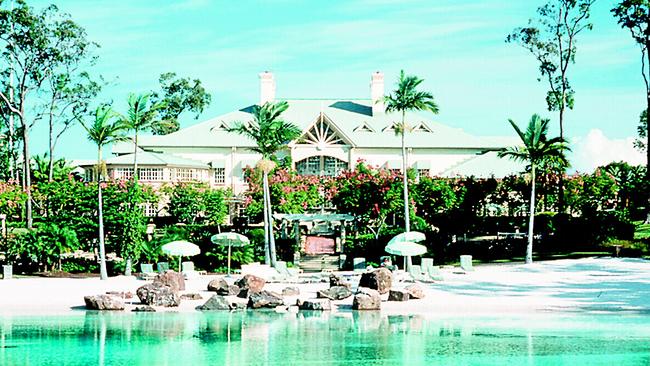
With a new mega development approved, it led to calls for Coolangatta Airport to be upgraded to allow for more international visitors to fly in, something rubbished at the time by deputy mayor Sir John Edgerton.
“Instead of wasting time, energy and finance in campaigning for a second international airport only 70 km from Brisbane, we should be concentrating on filling the domestic airline seats into Coolangatta,’’ he said.
Construction of Sanctuary Cove began in May 1985 when Sir Joh launched the project and announced the state would spend more than $5.8 million to build what is today known as Hope Island Road to support the growth of resorts in the city’s far north.
By late 1987 Sanctuary Cove was almost completed and Mr Gore prepared to launch his resort with great fanfare.
Originally published as Hope Island and Sanctuary Cove: Inside exclusive suburbs



